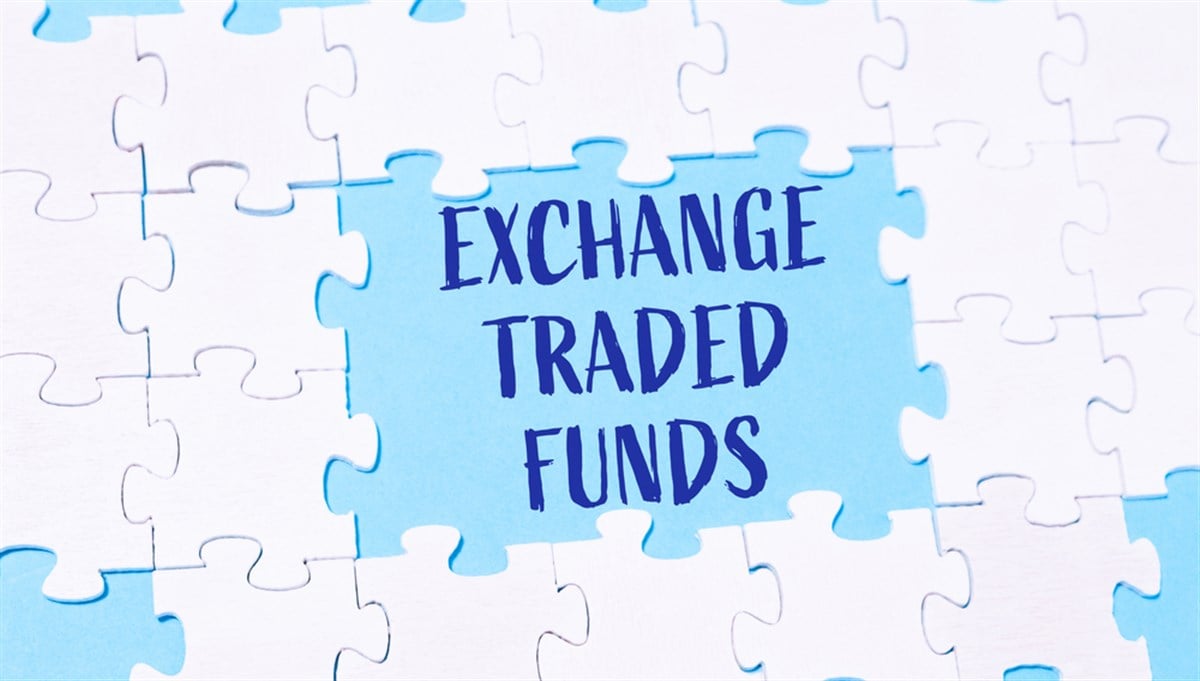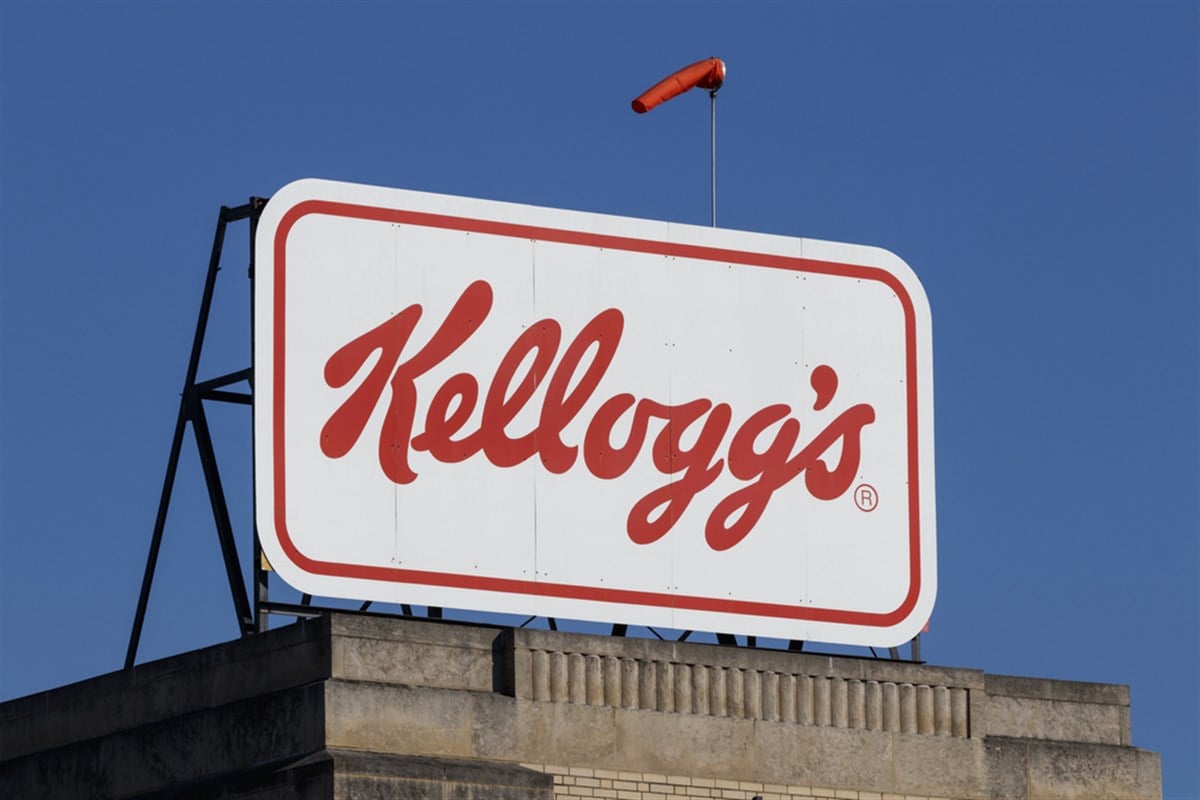 There are three areas in the market that could clearly command a rotation in the coming quarter, backed by economic tailwinds and themes.. ͏ |
| | Written by Gabriel Osorio-Mazilli 
The first quarter of 2025 is already underway, and investors across the market are probably wondering where the best place to put their capital to work is. With this in mind, a few economic and fundamental themes will point out a clear path to a particular area of the market that poses a potential gold mine for the coming months. Through diversification and fundamental tailwinds, these are names that investors want to keep. Though there are individual stocks worth mentioning in each of these areas, diversification away from the potential volatility that might come in the markets is also a key factor to keep in place for portfolios moving forward. This is why the work will start with exchange-traded funds (ETFs) that offer this safety and also the broader diversification that investors need during volatile environments like today. For reasons that will become clear in just a bit, investors will want to keep an eye on interest rate sensitive ETFs like the iShares 20+ Year Treasury Bond ETF (NASDAQ: TLT) for a potential run out of large-cap stocks and into bonds during volatility spikes and shifts in the inflation views for the economy. Then, two sectors deserve some attention today, the Energy Select Sector SPDR Fund (NYSEARCA: XLE) and the Industrial Select Sector SPDR Fund (NYSEARCA: XLI). Why Bonds Could Outperform This Quarter Analysts at Goldman Sachs mentioned that the broader S&P 500 could see some tail risks realized this year, all inside their 2025 macro outlook report, but then they also mentioned how a rotation could be made into bonds for economic and risk-to-reward reasons. With this in mind, it would become clear that the current bond yields are pricing not only United States GDP growth above economist forecasts but also inflation rates that aren’t currently justified by data releases, making today’s price a great place for investors to start looking for upside in bonds. More than that, President Trump has also expressed his intentions to bring interest rates lower, which would not only help reduce the interest payments burden on the national debt, but also create a friendlier environment for businesses to operate under. Considering that the latest manufacturing PMI report showed the first expansion in over 28 months, it looks like businesses in the manufacturing sector are already starting to prepare for this potential shift, and investors need to also consider it for their positions and portfolios. More Domestic Activity Will Call on Oil Understanding that the current spikes in manufacturing activity will also bring about a breakout of domestic demand and trade activity, investors can connect the dots to the effects that tariffs will have on certain stocks as a reaction to the shift away from international trade and into a domestic capacity and supply chain. What this will do is not only create demand for transporting goods within the United States, but also demand for making the products themselves, which all calls for oil demand altogether. From these themes, it is clear why Warren Buffett decided to buy up to 29% of Occidental Petroleum Co. (NYSE: OXY) ahead of the breakout. That is also why professional money managers and traders like Paul Tudor Jones recommended oil as a buy in a recent CNBC interview. The path is clear for investors to start looking into a potential breakout in oil stocks, though not all of them are made equal. When going up in the value chain, this entire thesis would point to shares of Transocean Ltd. (NYSE: RIG) being one of the best setups in the industry, offering over 100% upside from today’s prices. This entire rotation doesn’t stop here, though, as another sector will be a key player in bringing it all together. Manufacturing Stocks Will Dominate Of course, production needs to take place in order to supply the domestic and international trade demand themes. This is where manufacturing stocks in the United States come into play, especially those that are net exporters. That’s why short sellers have decided to close some of their positions in names like Caterpillar Inc. (NYSE: CAT), as seen in the 7.9% short interest decline over the past month alone. Wall Street analysts have kept a $163.1 consensus price target on Nucor Co. (NYSE: NUE) as part of the steel exporting industry. Most gauges are set in place for these three areas to deliver investors with the sort of upside they need to raise their first quarter performance to par with the rest of the year.  Read This Story Online Read This Story Online | "It's Elon's world, and the rest of us live in it."
Every investor in America is trying to figure out what he might do next. And one widely followed Boston based think tank is stepping forward with their official playbook.  Click here to learn more. Click here to learn more. |
| Written by Nathan Reiff 
Consumer staples are known for their stability during market volatility, as demand for essential goods remains consistent. With speculation around the Trump administration’s tariffs and potential price hikes, consumer-focused stocks, including traditional staples and other consumer-driven names, may look increasingly attractive. As of February 4, 2025, the administration has instituted planned tariffs on Chinese goods but has held off for now on tariffs on products from Canada and Mexico. Though this has limited the impact of tariffs on consumer purchasing power in the United States, it remains to be seen whether the other tariffs will eventually come into play, as well as whether the administration may increase the tariffs over time. In any event, the market has been sufficiently spooked, dropping sharply in trading immediately following the planned implementation of tariffs before stabilizing. Below, we examine three firms that may be stable alternatives to more volatile investments. Risk-averse investors might prefer a defensive strategy as 2025 continues, particularly if they feel more market shake-ups are in store. Supply Chain Stability Strengthens Conagra’s Defensive Appeal Conagra Brands Inc. (NYSE: CAG) is the company behind a host of packaged foods, with brands including Duncan Hines, Hunt's, Chef Boyardee, and Birds Eye. Conagra has attracted investors as a dividend stock, with an impressive yield of 5.57%, although its payout ratio of more than 137% may raise some concern over the sustainability of this payout rate going forward. CAG shares have faltered by about 12% in the year leading to February 4, 2025, as sales disappointed. However, there are reasons to expect a turnaround in 2025: the company's market share is expanding as it continues to focus on the frozen foods segment, and shipping volumes have been improving. Organic net sales and volume both returned to gains in the most recent quarter, although each of these metrics rose by under 1% year-over-year. Conagra's forward P/E ratio of 10.2 is considerably lower than its historical average, indicating that now might be a good time to buy while shares may be undervalued. Also, importantly for investors looking for a defensive play, the company has had plenty of time to ensure supply chain issues from recent years have been resolved. A Balanced Perspective on WK Kellogg’s Growth Potential WK Kellogg Co. (NYSE: KLG) is the portion of the legacy of Kellogg's business that is focused on cereal products in North America. In 2023, Kellogg's divided its operations across two companies; in addition to WK Kellogg, Kellanova (NYSE: K) took responsibility for snacks and goods in international markets. With tariff uncertainty on the rise, WK Kellogg may be somewhat better insulated than Kellanova due to its limited geographic focus. Nonetheless, WK Kellogg has faced mixed sentiment from Wall Street analysts in recent months—TD Cowen recently downgraded the stock from Hold to Sell and lowered its price target, but Barclays moved in the other direction, for example. There are concerns about the broader cereal market, including the potential for supply chain disruption due to climate change and other factors. However, in the latest quarter, five of WK Kellogg's six core brands—together accounting for about 70% of its sales—gained or maintained market share amid the company's improved in-store execution and targeted promotions, the latter of which has helped to offset price increases due to inflation in recent years. Tilray’s Diverse Operations Could Help Weather Market Uncertainty Tilray Inc. (NASDAQ: TLRY) is a cannabis, beverage, food, and wellness company headquartered in the United States but maintains an international presence. In the face of potential Canadian tariffs, Tilray's cannabis business would undoubtedly be impacted—although perhaps to a lesser degree than rivals in the cannabis space with operations exclusively in Canada. However, Tilray has repositioned itself in recent years as a leading craft beer company in the United States as well. Should the administration's tariffs on Mexican products go forward, Modelo Especial would likely fall under the updated tariff guidelines. Given that Modelo has become the top-selling U.S. beer in recent quarters, this scenario might open opportunities for U.S. brewers, including Tilray. To be sure, Tilray faces headwinds—little progress has been made toward broad cannabis legalization in the United States, for example—and the company's shares are trading close to a 52-week low. However, its diverse operations may position it to take advantage of tariffs, depending upon how the situation develops.  Read This Story Online Read This Story Online | |
| Written by Gabriel Osorio-Mazilli  With President Trump’s new round of tariffs targeting Canada, Mexico, and China, investors are closely watching how businesses in the affected regions will adapt. Initially set to take effect on February 4, the proposed 25% tariffs on Canadian and Mexican goods have been paused for 30 days following negotiations. In exchange, both countries have committed to deploying 10,000 troops each to their U.S. borders to help curb illegal immigration and drug trafficking. Meanwhile, the 10% tariff on Chinese imports remains in place. With President Trump’s new round of tariffs targeting Canada, Mexico, and China, investors are closely watching how businesses in the affected regions will adapt. Initially set to take effect on February 4, the proposed 25% tariffs on Canadian and Mexican goods have been paused for 30 days following negotiations. In exchange, both countries have committed to deploying 10,000 troops each to their U.S. borders to help curb illegal immigration and drug trafficking. Meanwhile, the 10% tariff on Chinese imports remains in place.
While this temporary reprieve has eased some market concerns, industries tied to cross-border trade remain in focus. Investors are looking for companies with the resilience to navigate these changes and emerge stronger in the months ahead. Three stocks stand out as potential beneficiaries: Canadian National Railway (NYSE: CNI), CEMEX S.A.B. de C.V. (NYSE: CX), and Tesla Inc. (NASDAQ: TSLA). Canada’s Transportation Activity Calls on National Railway Stock With Canadian goods subject to ongoing tariff uncertainty, a strong and efficient logistics network is essential to manage supply chain disruptions. Canadian National Railway (NYSE: CNI), one of North America’s largest transportation companies, is well-positioned to capitalize on these challenges. With this theme in mind, it makes sense to see shares of Canadian National Railway start to bottom as of late 2024, a support level around $98 to $100 a share that hasn’t been broken since. This would also make the stock trade at only 74% of its 52-week high, the foundational factor for this seeming value play in Canada’s new tariff reality. But here’s why investors should trust this belief. Wall Street analysts now forecast up to $1.53 in earnings per share (EPS) for the same quarter 12 months from now, calling for a net growth rate of 18% from today’s $1.30 EPS. If tariffs were bad for Canada’s logistics industry, then analysts would have shifted this forecast much lower. Nor would those at the Royal Bank of Canada have reiterated their Outperform rating on the stock while also placing a valuation of up to $171 a share for Canadian National Railway stock. This view now calls for up to 73% upside from today’s low price, another confirmation for investors to take a look into this name today. Construction Rebounds Can Help Cemex Stock Mexico’s cement and construction materials exports to the United States aren’t likely to stop because of tariffs. If anything, there will be more demand in the coming months. Considering that the mortgage market index now hovers at a 1996 low level, a rebound in the American housing market could suddenly call for more construction. That is where CEMEX S.A.B. de C.V., known as Cemex, comes into play, a stock that has also bottomed since late 2024 and a name that still trades at a low 60% of its 52-week high to make it another attractive potential Buy in today’s market. This is also why Wall Street analysts have kept a consensus price target of $7.65 per share on Cemex stock. This view would call for a net upside of 26.6% from where it trades today. Recognizing this upside potential as a solid scenario, even bearish traders decided to step off the gas a little with their short positions, as seen by the 7.8% decline in the company’s short interest for the past month alone. More than that, the market's willingness to pay a premium for the stock compared to other peers in the cement industry is a clear sign. By trading at a price-to-earnings (P/E) ratio of up to 19.7x today, Cemex is now above the industry's average of 11.4x. Some investors might call this expensive, while others will know that markets always pay premiums for stocks they know will outperform in the coming months. Tesla’s Technological Advantage Will Prevail The underlying assembly process is the difference between Tesla and other car makers like Ford Motor (NYSE: F). While Tesla’s is mostly automated, Ford’s unionized workforce has stopped the company from implementing technology to help its assembly process and margins as a result. Without unions and counting on more technology in each of its assembly steps, Tesla stock is not only able to keep its prices lower than competitors but also set up to take over some of the market share that might be abandoned by the inability of these other brands to compete. This is why, at 80% of its 52-week high, Tesla stock is a potential bargain to watch out for in this new tariff environment. That’s also one of the reasons analysts at Mizuho felt comfortable reiterating their Outperform rating on Tesla stock, and this time leaving a valuation of up to $515 a share on it. To prove these analysts right, Tesla stock would have to rally by as much as 34.2% from where it trades today, not to mention make a new 52-week high as well to help this thesis live out.  Read This Story Online Read This Story Online | He turned PayPal from a tiny, off-the-radar startup… to a massive $64 billion giant.
Then, he did it again with Tesla… which is up more than 19,500% since 2010.
For perspective, that turns $100 invested into almost $20,000!  Click here now for the urgent details. Click here now for the urgent details. |
| More Stories |
| |
|
|
